Ask Ethan #62: The Biggest Spiral Galaxy
There are monster galaxies in the Universe thousands of times the size of ours. But none of them are spirals like us!
“Sometimes, I sit alone under the stars
and think of the galaxies inside my
heart, and truly wonder if anyone will
ever want to make sense of all that
I am.” –Testy McTesterson
When you look out at the night sky from a dark site, sure, you might see stars, planets, and even faint clusters and nebulae with your naked eye. But if you truly have dark skies and no Moon littering the sky, there’s one spectacle that should dominate all the others in scale and scope: the grandiose Milky Way itself!
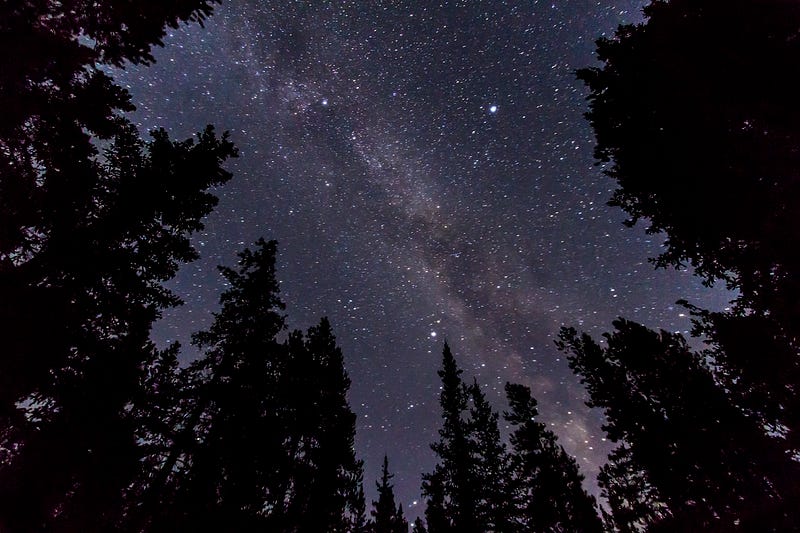
This is the plane of our galaxy, viewed edge-on from our point of view inside of it. And it’s huge, containing hundreds of billions of stars across a span 100,000 light-years in diameter. But what about galaxies much larger than ours? Surely we’re not so remarkable, are we? That’s the subject of this week’s Ask Ethan question, which comes courtesy of Doug Watts:
“Why aren’t some galaxies really really really big? Is there some constraint which confines a spiral to ‘about’ the size of the Milky Way or Andromeda instead of 1,000 or 10,000x as large?”
As it turns out, the Milky Way isn’t the largest spiral out there, not by a long shot. And neither is Andromeda, the biggest galaxy by angular size in our sky.
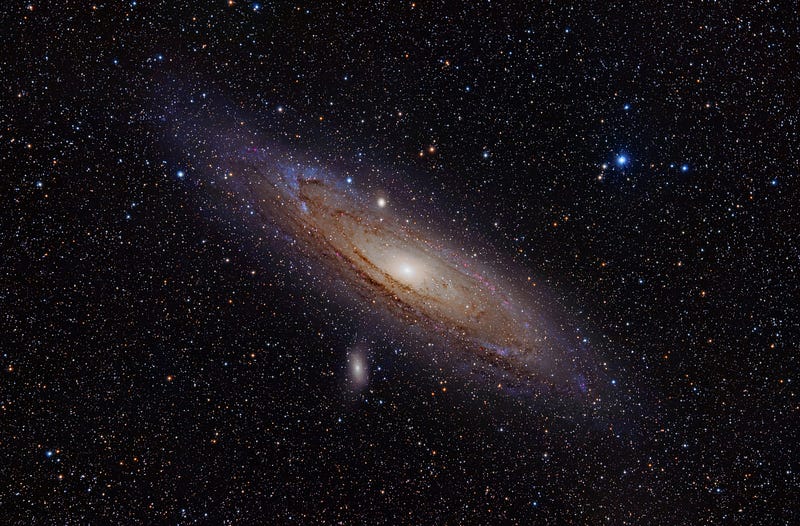
Of course, the reason Andromeda appears so large in our skies is because of a combination of two factors:
- It actually is big! With about one trillion stars in it, or about three-to-five times as many as we have, and more than double our galaxy’s diameter, coming in at about 220,000 light-years in diameter, it’s the biggest galaxy in our local group.
- And it’s close to us! At only 2.54 million light years distant, it’s by far the closest large galaxy to us.
This makes sense; it’s called the local group for a reason: because everything in it is gravitationally bound to us! In another few billion years, Andromeda, the Milky Way, the Triangulum Galaxy and all the other small galaxies in our group will merge together, creating one solitary giant galaxy.
And believe it or not, the type of galaxy it will create holds a clue to answering Doug’s question.
You see, what we wind up with won’t be an even bigger, more impressive spiral than our own, but rather a giant elliptical galaxy! Before we get into the reasons why we’ll become an elliptical rather than a spiral, let’s remember that we’re doing science here, and that looking at one or two isolated examples isn’t going to cut it. If we want to accurately know what happens in the Universe, we need to look at the full suite of what we can see, and draw our conclusions from that.
So, if we look out at the galaxies in our Universe — and preferentially select the largest ones — what do we find?
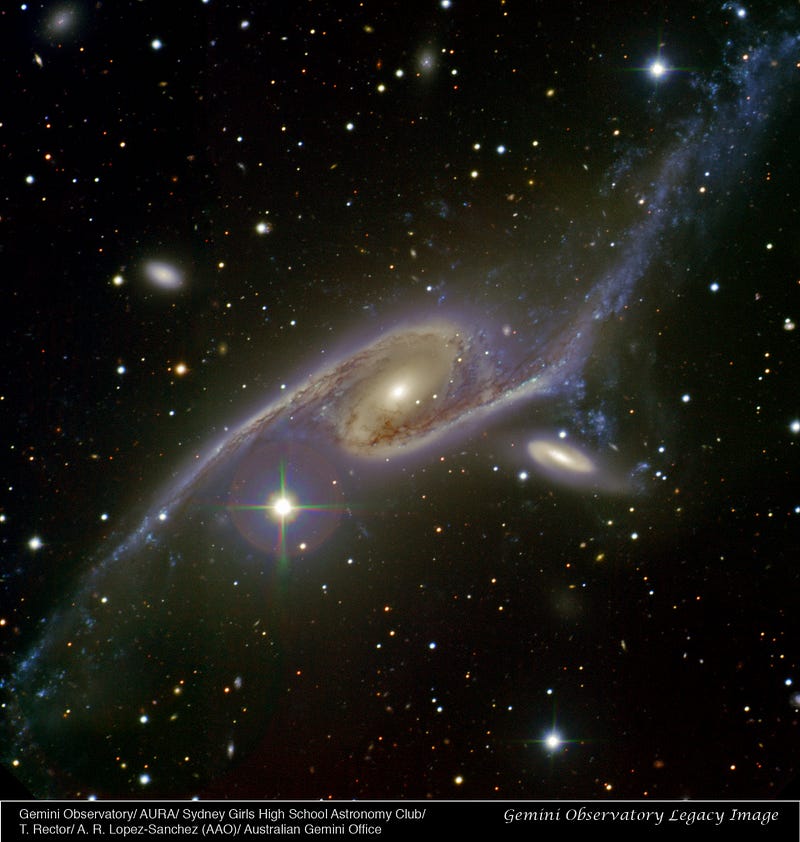
Here’s a fun example: there are a few galaxies in this picture, and one of them is pretty comparable to the Milky Way. That would be the spiral on the right of the image: IC 4970, the one that’s gravitationally interacting with its behemoth of a neighbor.
But the “giant” galaxy we’re seeing, the one with the two huge, distended arms, actually extends even farther than we can see in this image. Thanks to ultraviolet light as seen by NASA’s GALEX spacecraft, we now know that this galaxy is the largest (in terms of physical size) spiral galaxy discovered so far in the Universe.
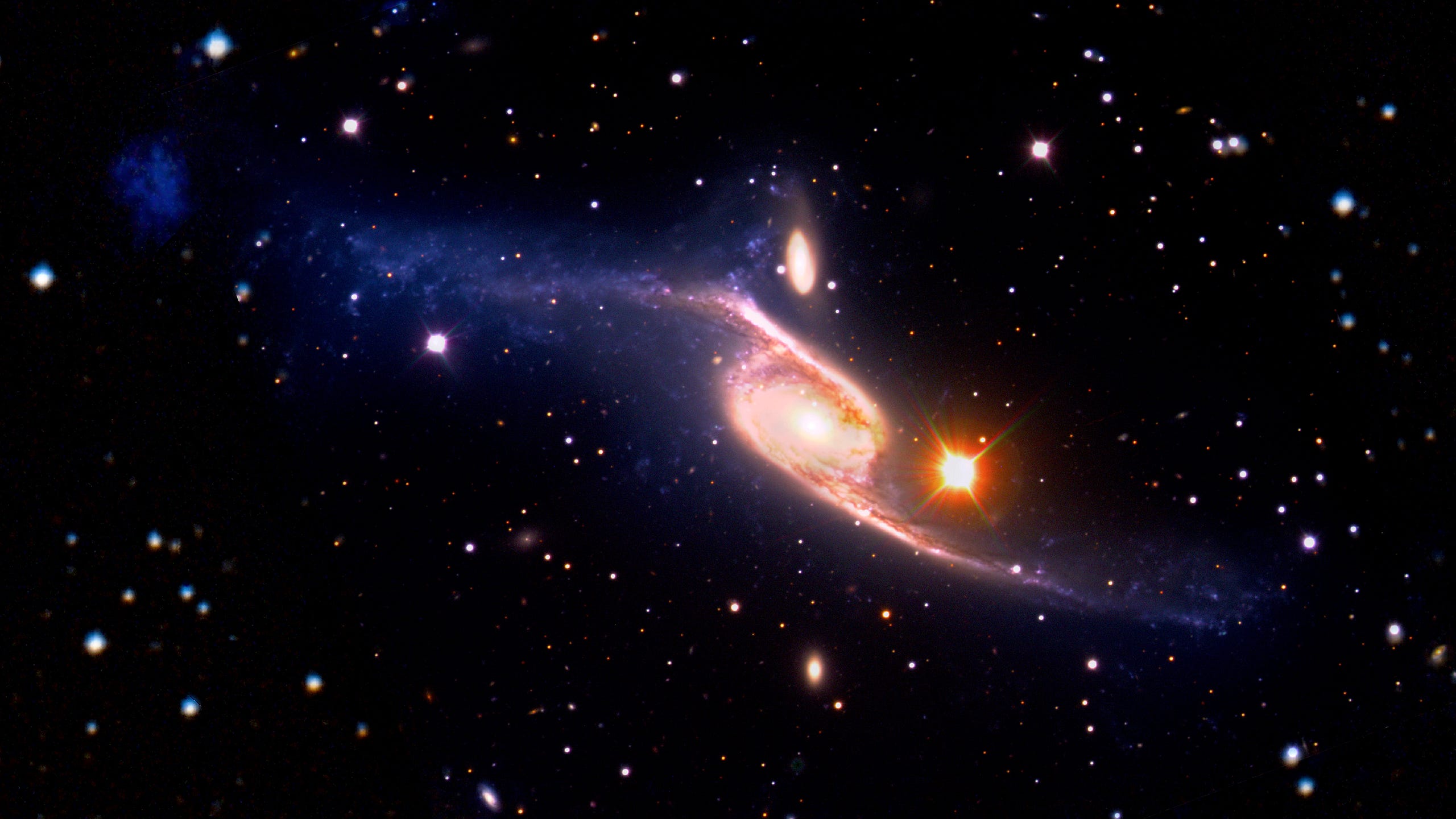
This is the galaxy NGC 6872, which, at 522,000 light-years across, is the largest known spiral in the Universe. Now, there may be larger spirals out there, and we’ve only identified this one because it’s “just” a little over 200 million light-years away. Still, it’s significantly more massive than either the Milky Way or Andromeda (or the two galaxies combined, for that matter), it’s much larger in terms of physical size, and as far as we can tell, it’s very unlikely for a spiral to get much larger than this.
But there are plenty of galaxies that dwarf this one: they just all happen to be elliptical galaxies!

Even if we just look to the Virgo Cluster, the nearest large cluster of galaxies to us, we find that its largest galaxy is Messier 87, which is about a million light-years in diameter at its greatest extent and contains — hang on — many trillions of stars and up to two hundred times the mass of our galaxy in total!
In other words, this somewhat common type of galaxy — a run-of-the-mill large elliptical — completely dwarfs the largest known spiral. And if we look to even larger ellipticals, things only get worse by comparison!
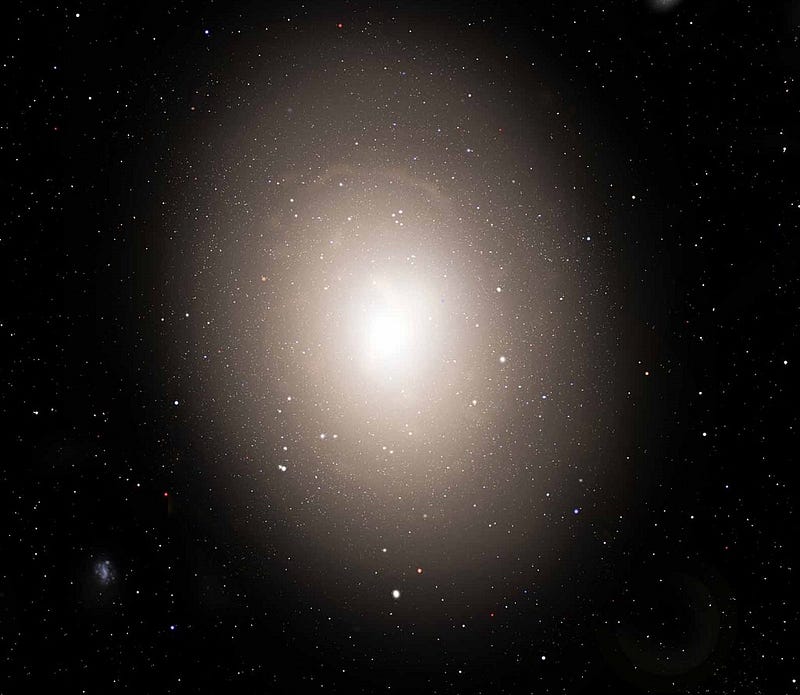
The galaxy above is IC 1101, the largest single identified galaxy in the Universe, so far. At 1.07 billion light-years distant, it contains about 100 trillion stars, or almost a thousand times as many as the Milky Way does, with a total mass of a quadrillion (10^15) solar masses and a size estimate of 5-to-6 million light-years across.
Compared to the largest known spiral, then, the largest known elliptical contains:
- almost 100 times as many stars,
- approximately a few hundred times the total mass, and
- is about 10 times the physical size in each of their largest directions.
So what Doug notes is true!
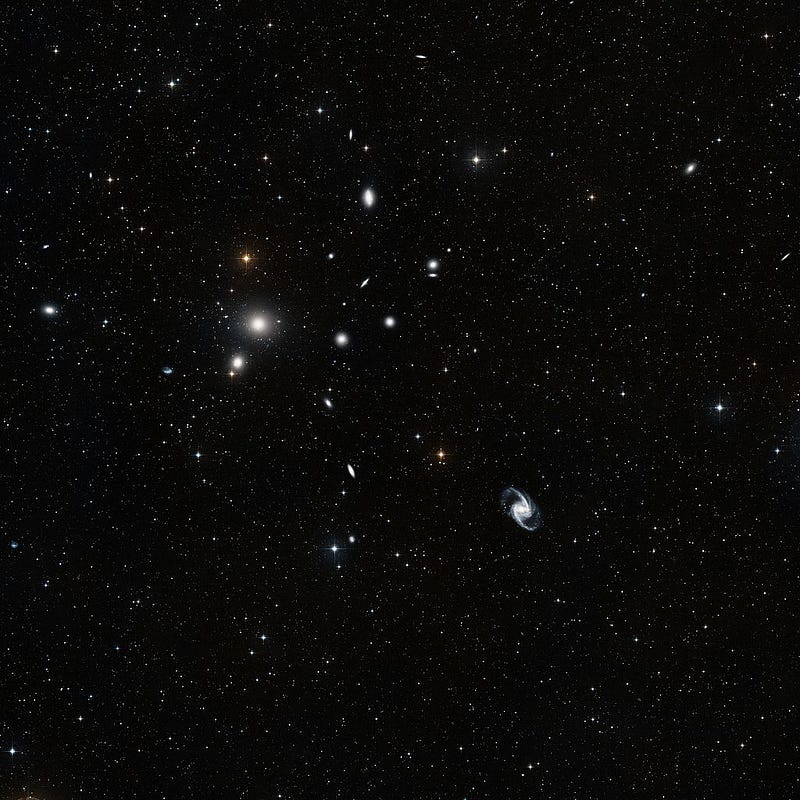
There are plenty of galaxies out there in the Universe — normally at the centers of giant clusters — that are literally many hundreds to a thousand times the mass of our Milky Way, but none of them are spirals! For example, the large, bright spiral in the lower right of the Fornax cluster image, above, may be almost the same physical size as the most massive galaxy towards the upper left, but it’s not even the mass of Andromeda, while the giant elliptical is many times Andromeda’s total mass.
So why do spirals, so to speak, “crap out” above a certain size? To understand this, let’s watch a simulation of how a spiral galaxy forms, while I describe the steps it takes to you.
- In the early Universe, shortly after the Big Bang, the tiny regions that are born with slightly more matter-and-energy than others begin preferentially attracting matter, through the gravitational force, to them.
- Eventually, enough matter is attracted that these gas clumps collapse, leading to star formation and forming star clusters.
- These clusters are part of a larger structure — an asymmetric structure — that collapses in the shortest direction first to form a disk.
- This disk accretes more and more matter, collecting all of the clusters in its vicinity, and develops a spiral-like structure due to density waves.
- And over time, the small-to-midsize clusters that merge with it get funneled into the galactic core, retaining a spiral structure.
That’s the end of this simulation, and the end of this part of the story. This is very likely what happened to our Milky Way, to Andromeda, and to pretty much all of the other spirals we see. A large cloud of gas gravitationally collapsed, “pancaked,” and rotated. The density waves due to instabilities in the disk created the spiral pattern, and it remained a spiral because there was no catastrophic even that destroyed that structure.
But the very process that would cause a larger galaxy to come about — merging with one or more other large galaxies — is the very process that would destroy the spiral structure we’re looking for!
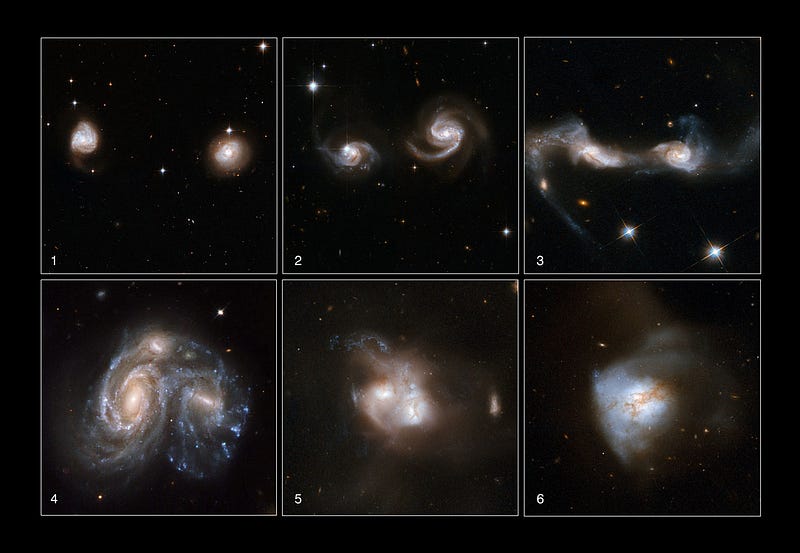
This is pretty much universally what we see: isolated galaxies that never underwent a huge, major merger are relatively undisturbed spirals. Galaxies undergoing on at present are tremendously disrupted with large amounts of active star formation, and galaxies that we see coming off a recent one go through a process of settling into a final, elliptical state once the starburst phase ends.

If we wanted two large galaxies to merge together and remain a spiral, they’d need an awfully serendipitous (i.e., a very statistically unlikely) initial configuration of how they were oriented and rotating relative to one another. The more mergers we get, and in particular the more major mergers we get, the more likely we are to destroy that spiral structure and wind up with an elliptical instead.
There are even a few galaxies that appear to be hybrids of spirals and ellipticals, and it’s thought that they come about when you have what I think of as a “semi-major merger”, where a large galaxy merges with a still-significant-but-smaller galaxy to create a partial elliptical structure, but the original spiral remains somewhat intact.
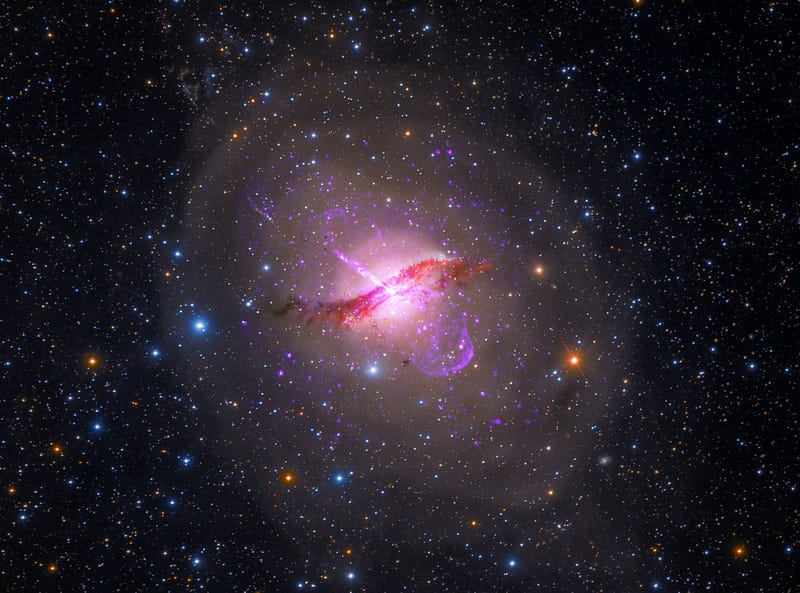
And that’s why the largest spiral galaxy in the Universe isn’t so big after all, and that the bigger galaxies get through mergers, the more likely they are to become giant ellipticals instead of spirals! Thanks for a great question, Doug, and I hope this answer satisfies your curiosity, and teaches you why the bigger a galaxy becomes, the less likely it is to remain a spiral.
If you’ve got a question you’d like to have answered, send in your questions and suggestions here, and you just might find yourself the subject of the next Ask Ethan!
Leave your comments at the Starts With A Bang forum on Scienceblogs!





